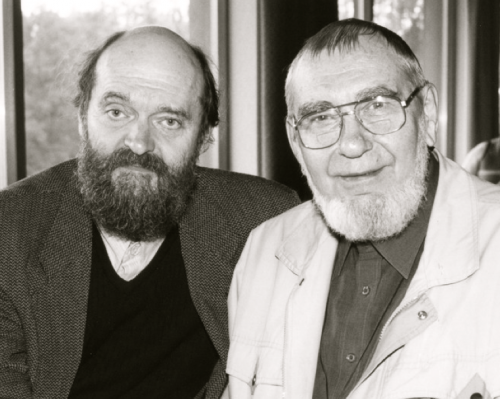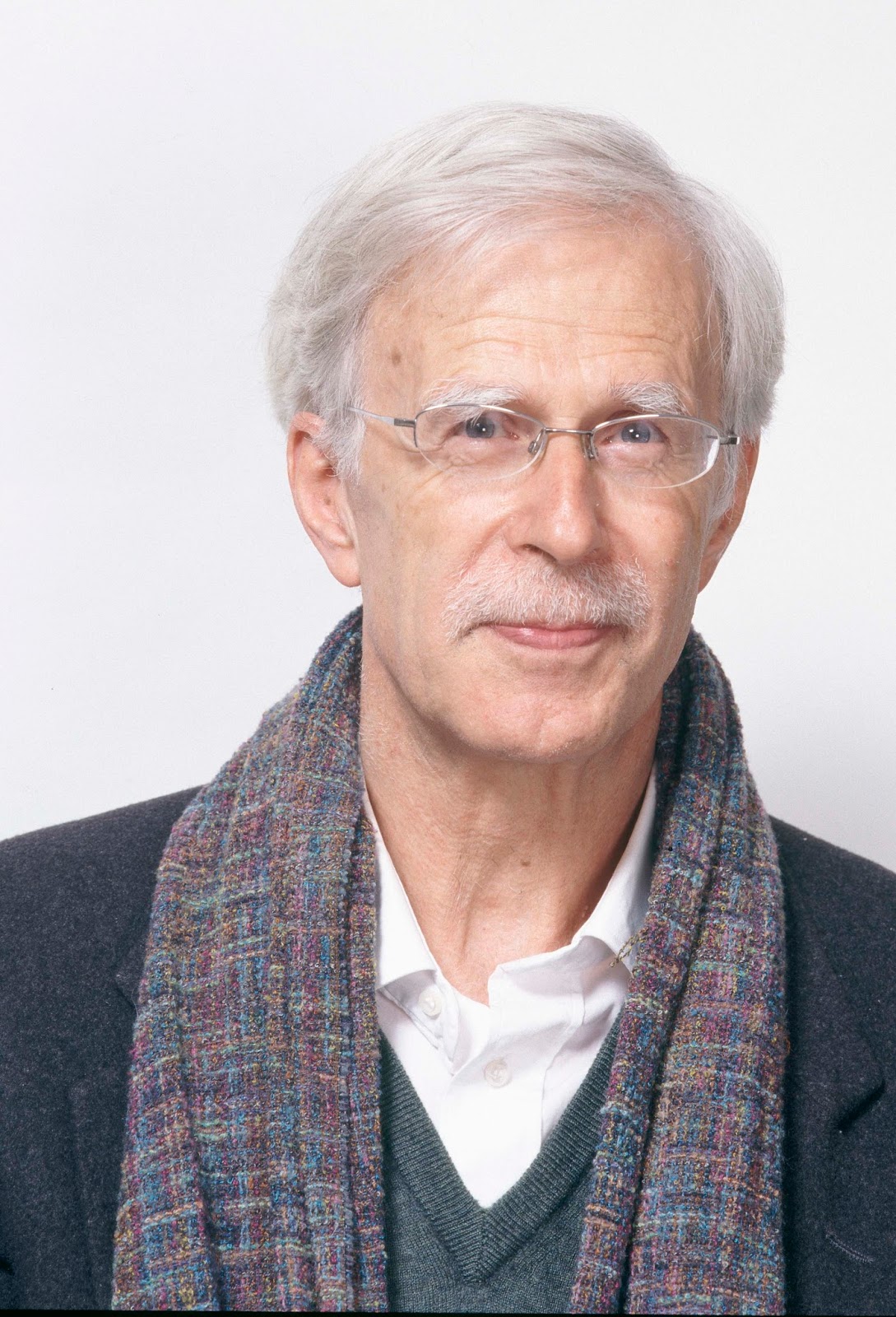Estonian Philharmonic Chamber Choir, Milton Court review - Arvo Pärt plus | reviews, news & interviews
Estonian Philharmonic Chamber Choir, Milton Court review - Arvo Pärt plus
Estonian Philharmonic Chamber Choir, Milton Court review - Arvo Pärt plus
Startling masterpieces by Jonathan Harvey and Veljo Tormis follow a familiar first half
Make Arvo Pärt the bulwark of any concert and you can surprise as well as delight the full house he’s likely to win you with the rest of your chosen programme.
It’s hardly surprising that in a land which every five years holds an outdoor choral festival accommodating anything up to 40,000 singers, there should be two professional chamber choirs of outstanding quality. Vox Clamantis’s all-Pärt CD, The Deer’s Cry, is among the three nominated discs in this year’s BBC Music Magazine Awards choral category, and it just has the edge on the EPCC’s equivalent, not least by virtue of its more varied programming. But you couldn’t fault the a cappella sequence of last night’s first half, from the 1963 Solfeggio – C major in the midst of Pärt’s early avant-gardism – to Dopo la vittoria composed for Milan in 1997, vigorous tale-telling of how St Ambrose broke into his Te Deum while baptising Augustine.
 In between, relatively inward religious works had their sudden blazes, above all in the glory of "the light to lighten the gentiles" in the 2001 Nunc dimittis, surely one of the best settings ever. At such moments, the penetrating focus of the choir is one of its most striking assets. A church - why not St Giles Cripplegate or the deconsecrated LSO St Luke's? - would have helped to provide more ambience than Milton Court can offer, certainly. Perhaps a bit more phrasing from Putniņš and more word-consciousness wouldn’t have gone amiss in the repetitions of Summa, the Creed in all but name (such things mattered in Soviet Estonia).
In between, relatively inward religious works had their sudden blazes, above all in the glory of "the light to lighten the gentiles" in the 2001 Nunc dimittis, surely one of the best settings ever. At such moments, the penetrating focus of the choir is one of its most striking assets. A church - why not St Giles Cripplegate or the deconsecrated LSO St Luke's? - would have helped to provide more ambience than Milton Court can offer, certainly. Perhaps a bit more phrasing from Putniņš and more word-consciousness wouldn’t have gone amiss in the repetitions of Summa, the Creed in all but name (such things mattered in Soviet Estonia).
The narrative of the parable Zwei Beter, on the other hand, was beautfully inflected; what queasy harmonies Pärt (pictured above with Veljo Tormis) suddenly pulls out of his hat for the publican’s humble self-chastisement before God, in marked opposition to the showy self-regard of the Pharisee.
Singing in their own intensely rhythmic language for the outer portions of the second half, the altos especially brought forth a tone you simply wouldn’t get with a British choir (and several, of course, are equally fine interpreters of Pärt’s more restrained music). My Estonian companion told me she gets a lump in the throat when she hears the lushly harmonised psalm settings of Cyrillus Kreek, which she sang often as a child.

The same could be said for the two vivid folk-settings - one a succinct and ear-wormy encore – from Tormis’s St John’s Day Songs, in a dialect which most Estonians find hard to understand (there is also a string quartet version, numbers from which were played by musicians from the Estonian Festival Orchestra in Pärnu last summer). But its meaning is not; to what glorious adventures, sidesteppings up and down keys, Tormis submits the melody of “St John’s Song”.
The stunner to conclude was Tormis's Curse upon Iron, a primitive shamanic ritual complete with heart-stopping drum – brilliantly wielded by a chorister - to follow the likes of Prokofiev’s “Akkadian incantation” Seven, They Are Seven. The mutterings, whoops and wails of the choristers and the two splendid (uncredited) tenor and bass soloists had the desired hypnotic effect, but Tormis doesn’t just stick with one mode; we are jolted into the 20th century’s belligerent abuse of ores as the sopranos set off wartime sirens. Quite a way to end, with a timely warning over nuclear proliferation, and a job well done in terms of promoting another Estonian voice very different to Pärt’s – while Arvo thrives, Tormis, alas, died last year - to a spellbound audience. More Estoniana is around the corner for London this centenary year: watch this space.
rating
Explore topics
Share this article
The future of Arts Journalism
You can stop theartsdesk.com closing!
We urgently need financing to survive. Our fundraising drive has thus far raised £33,000 but we need to reach £100,000 or we will be forced to close. Please contribute here: https://gofund.me/c3f6033d
And if you can forward this information to anyone who might assist, we’d be grateful.

Subscribe to theartsdesk.com
Thank you for continuing to read our work on theartsdesk.com. For unlimited access to every article in its entirety, including our archive of more than 15,000 pieces, we're asking for £5 per month or £40 per year. We feel it's a very good deal, and hope you do too.
To take a subscription now simply click here.
And if you're looking for that extra gift for a friend or family member, why not treat them to a theartsdesk.com gift subscription?
more Classical music
 Gromes, Hallé, Chauhan, Bridgewater Hall, Manchester review - new concerto and music of triumph
Spirit of Germany in the 1930s captured in Herz’s tense and despondent work
Gromes, Hallé, Chauhan, Bridgewater Hall, Manchester review - new concerto and music of triumph
Spirit of Germany in the 1930s captured in Herz’s tense and despondent work
 Helen Charlston, Sholto Kynoch, Temple Church review - fine singing, powerful stage presence
Coups de théâtre in a well-constructed programme
Helen Charlston, Sholto Kynoch, Temple Church review - fine singing, powerful stage presence
Coups de théâtre in a well-constructed programme
 Ridout, 12 Ensemble, Wigmore Hall review - brilliant Britten and bombastic Brahms
Dazzling solo and ensemble playing in pieces inspired by music of the past
Ridout, 12 Ensemble, Wigmore Hall review - brilliant Britten and bombastic Brahms
Dazzling solo and ensemble playing in pieces inspired by music of the past
 Argerich, Oxford Philharmonic Orchestra, Papadopoulos, Barbican review - the great pianist as life and soul
Her delivery of the Beethoven made it clear that she still merits legend status
Argerich, Oxford Philharmonic Orchestra, Papadopoulos, Barbican review - the great pianist as life and soul
Her delivery of the Beethoven made it clear that she still merits legend status
 Jessica Duchen: Myra Hess - National Treasure review - well-told life of a pioneering musician
Biography of the groundbreaking British pianist who was a hero of the Blitz
Jessica Duchen: Myra Hess - National Treasure review - well-told life of a pioneering musician
Biography of the groundbreaking British pianist who was a hero of the Blitz
 Chamayou, BBC Philharmonic, Morlot, Bridgewater Hall, Manchester review - blasts of Boulez, magical Ravel
Celebration of the two French masters continues in big bangs and gentleness
Chamayou, BBC Philharmonic, Morlot, Bridgewater Hall, Manchester review - blasts of Boulez, magical Ravel
Celebration of the two French masters continues in big bangs and gentleness
 Classical CDs: Snow, shards and swinging oars
Contemporary choral works, revamped lieder plus piano music from Ireland and Scotland
Classical CDs: Snow, shards and swinging oars
Contemporary choral works, revamped lieder plus piano music from Ireland and Scotland
 Bach's Mass in B minor, The English Concert, Bezuidenhout, St Martin-in-the-Fields review - solemnity and splendour
The greatest of choral anthologies smoulders, then flies
Bach's Mass in B minor, The English Concert, Bezuidenhout, St Martin-in-the-Fields review - solemnity and splendour
The greatest of choral anthologies smoulders, then flies
 Sidorova, Philharmonia, Alsop, Royal Festival Hall review - ladies of the dance
Vitality, virtuosity and sensuality on a pan-American trip
Sidorova, Philharmonia, Alsop, Royal Festival Hall review - ladies of the dance
Vitality, virtuosity and sensuality on a pan-American trip
 MacMillan's Ordo Virtutum, BBC Singers, Jeannin, Milton Court review - dramatic journey of a medieval soul
Choral music's finest advocate runs the gamut in an epic battle of heaven and hell
MacMillan's Ordo Virtutum, BBC Singers, Jeannin, Milton Court review - dramatic journey of a medieval soul
Choral music's finest advocate runs the gamut in an epic battle of heaven and hell
 Braimah Kanneh-Mason, Fernandes, Gent, 229 review - a beguiling trip around the world
Engagingly humble and empathetic work from three talented musicians
Braimah Kanneh-Mason, Fernandes, Gent, 229 review - a beguiling trip around the world
Engagingly humble and empathetic work from three talented musicians

Add comment